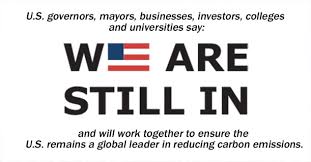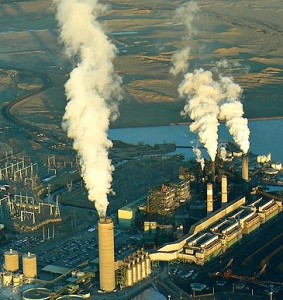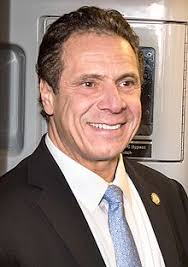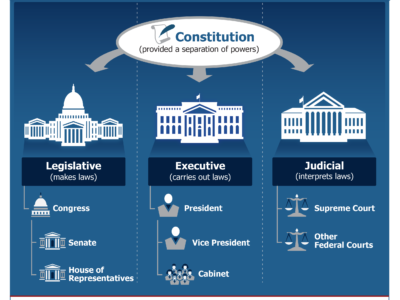Energy
The Expanding Gap Between Business and Trump
Big business was happily married to the GOP. But there’s trouble in paradise.
The GOP used to be synonymous with big business. But there seem to be growing divisions – divisions that may open the way to new environmental initiatives. In April, the Washington Post ran a story about the U.S. Chamber of Commerce’s decision to loosen its ties to the GOP and move toward a more bipartisan …
Continue reading “The Expanding Gap Between Business and Trump”
CONTINUE READINGRenewable Texas: Lessons from the Lonestar State
Texas has the most wind power in the country and is rapidly building solar. How did that happen?
People are often surprised to learn that Texas is the national leader in wind power, with the twice the generating capacity of any other state. On one notable night in December of 2015, the state got 45% of its power from wind, though the year-round average was only about 10%. In July of this year, the …
Continue reading “Renewable Texas: Lessons from the Lonestar State”
CONTINUE READINGACE or Joker? Trump’s Self-Defeating Climate Rule
The ACE rule adds costs, achieves little, and disempowers the states. Nice job.
The Trump ACE rule violates all the Administration’s own deregulatory principles.To hear Trump talk, the point of deregulation is to reduce the burden of regulation on industry. But weirdly enough, that doesn’t turn out to be true of Trump’s effort to repeal Obama’s Clean Power Plan (CPP) and replace it with his own Affordable Clean …
Continue reading “ACE or Joker? Trump’s Self-Defeating Climate Rule”
CONTINUE READINGNew York’s Big Move
The Empire State has jumped into the first tier of state climate action.
Last week, New York Governor Andrew Cuomo signed a breakthrough climate change law, the “New York State Climate Leadership and Community Protection Act.” What every state does to address climate change is worthwhile, of course, but New York is particularly significant in terms of the national picture. It’s the nation’s third-most populous state and also …
Continue reading “New York’s Big Move”
CONTINUE READINGResolving Interconnection Disputes to Speed Clean Technology Deployment
New California agency dispute resolution process in need of expert panelists
When a homeowner or business wants to install clean technology like renewable electricity generation or energy storage either for on-site usage or as a grid service, they occasionally run into problems obtaining approvals from the local electric utility to connect that resource to the electrical grid. The owner must enter into an interconnection agreement with …
Continue reading “Resolving Interconnection Disputes to Speed Clean Technology Deployment”
CONTINUE READINGIs the Sun Finally Rising in the Southeast?
Slowly, and a bit grudgingly, the Old South is moving toward solar.
Southern states like to brag about their sunny weather. Florida even calls itself the Sunshine State. Yet the region lags well behind in terms of putting that sunshine to work. But it appears that change is coming. Solar generating capacity in the Southeast is expected to nearly double over the next three years, though from …
Continue reading “Is the Sun Finally Rising in the Southeast?”
CONTINUE READINGHelping Repair Our Broken Governance System
Our institutions have been battered. How will we be able to fix them?
Much of Trump’s damage to the environment is obvious: his efforts to increase gas and oil production, his regulatory rollbacks, and his efforts to gut the agencies charged with protecting the environment. But he has also done deeper damage to the institutions we need to address climate change and other daunting environmental challenges. These problems …
Continue reading “Helping Repair Our Broken Governance System”
CONTINUE READINGGuest Blogger Nick Bryner: Cooking the Books While Cooking the Planet: A First Look at the EPA’s ACE Rule
Final Rule Changes Baseline Assumptions & Approach to Cost-Benefit Analysis in Attempt to Justify Weak Standards
Yesterday, the Trump EPA released its long-awaited response to the Obama-era Clean Power Plan. At first glance, the final rule has been carefully crafted in an attempt to avoid several glaring legal vulnerabilities of the rule—and to obscure the obvious inadequacy of the Administration’s response to climate change. The EPA has found many contradictory ways …
CONTINUE READINGThe Forgotten Environmental Legacy of Jimmy Carter
Carter saved millions of acres of wilderness, signed the Superfund law, and began the renewables revolution.
Many people today know Jimmy Carter as an ex-President who has strongly advocated for human rights. His Presidency is probably best remembered for the Iranian Hostage crisis. His post-presidential career was at least as notable as his time in the White House. Historians find his presidency flawed by micro-management and lack of rapport with the …
Continue reading “The Forgotten Environmental Legacy of Jimmy Carter”
CONTINUE READING










